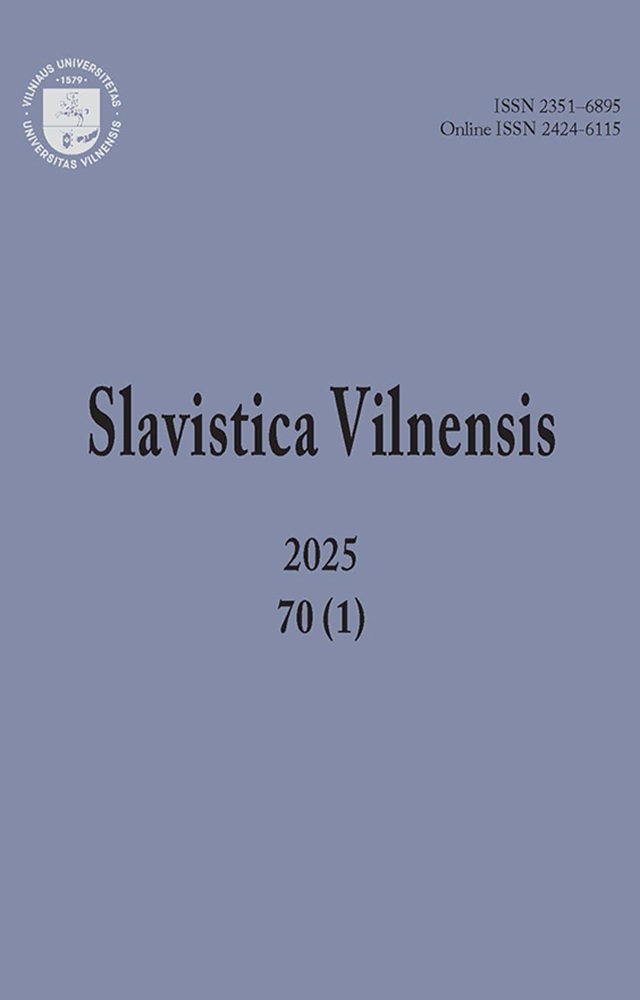Abstract
Language change in Southeastern Lithuania over two or three generations has led to close
mutual relations between languages, reflected in the lexicon. People living in Southeastern Lithuanian
borderland are multilingual – they generally use two languages in everyday life, and, in certain situations – even three or four languages: Polish, Belarusian, Lithuanian, and Russian. The object of the
study is the areas of the Lithuanian Language Atlas 11 points of Šalčininkai District Municipality,
where the Belarusian dialect called po prostu is used. The study aims to identify and study the lexical
and semantic Lithuanianisms used in the current Belarusian dialect po prostu. The study’s main goal
is to identify and group Lithuanianisms recorded in the living Belarusian language, with the objective
of revealing their current meaning: the main one, which is widespread throughout the region, and the
secondary (new, adjacent) one, characteristic only of the studied area or residential area.
The majority of the recorded Lithuanianisms are widespread throughout the Lithuanian and Belarusian
linguistic borderland and are a living witness confirming the Lithuanian substratum of the current dialects of those territories. Most of the Lithuanianisms have preserved their original meaning, however,
differences in the semantics of these words have been recorded. Three groups of Lithuanianisms have
been distinguished: 1) Lithuanianisms which have preserved their original meaning, have established
themselves throughout the entire region, and were previously actively used; 2) Lithuanianisms used
in individual areas, the main meaning of which has narrowed, changed, or has been adopted from the
Belarusian language; 3) coincidences and situationally (repeatedly) used Lithuanianisms, which should
be assessed as cases of code-switching.

